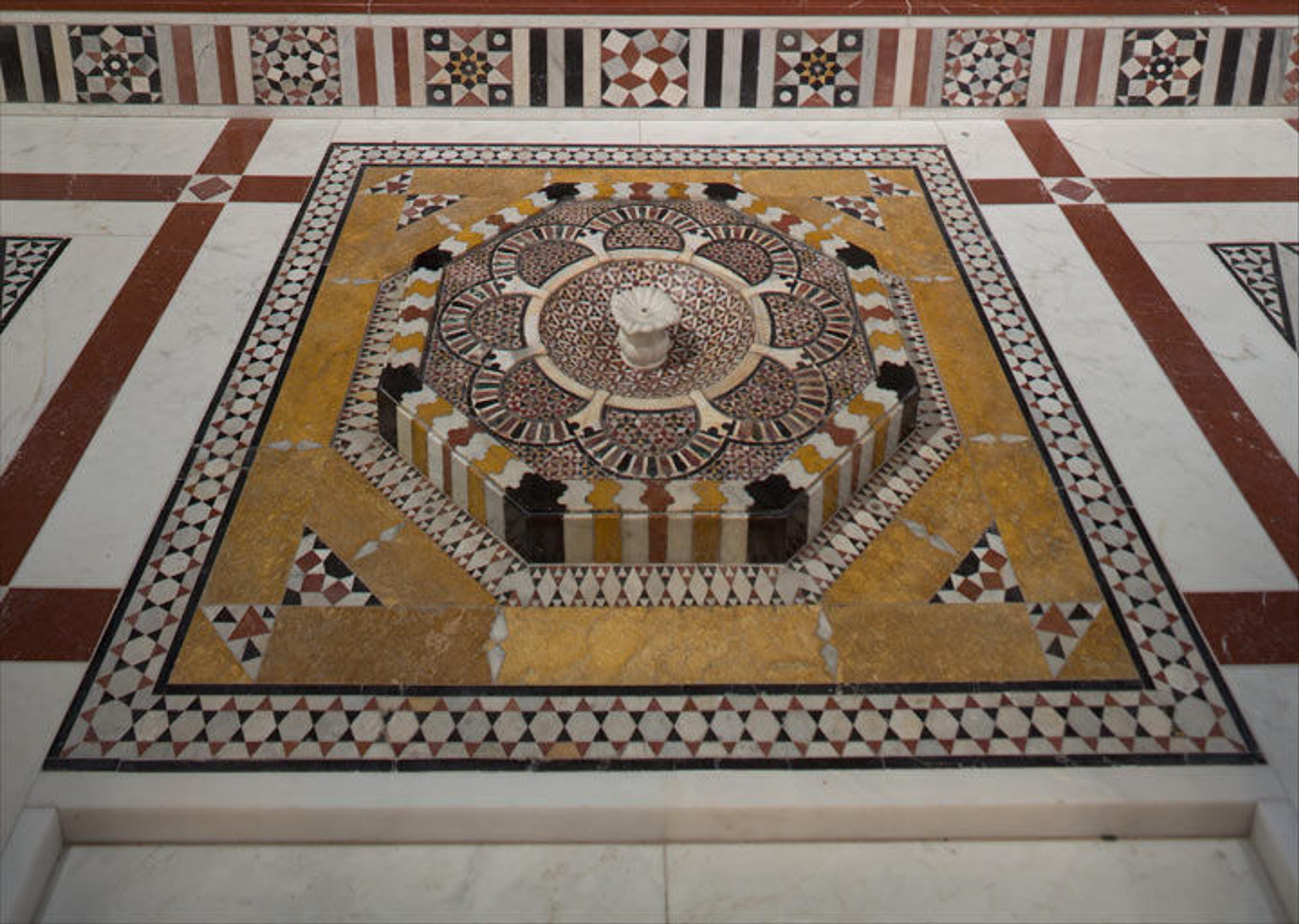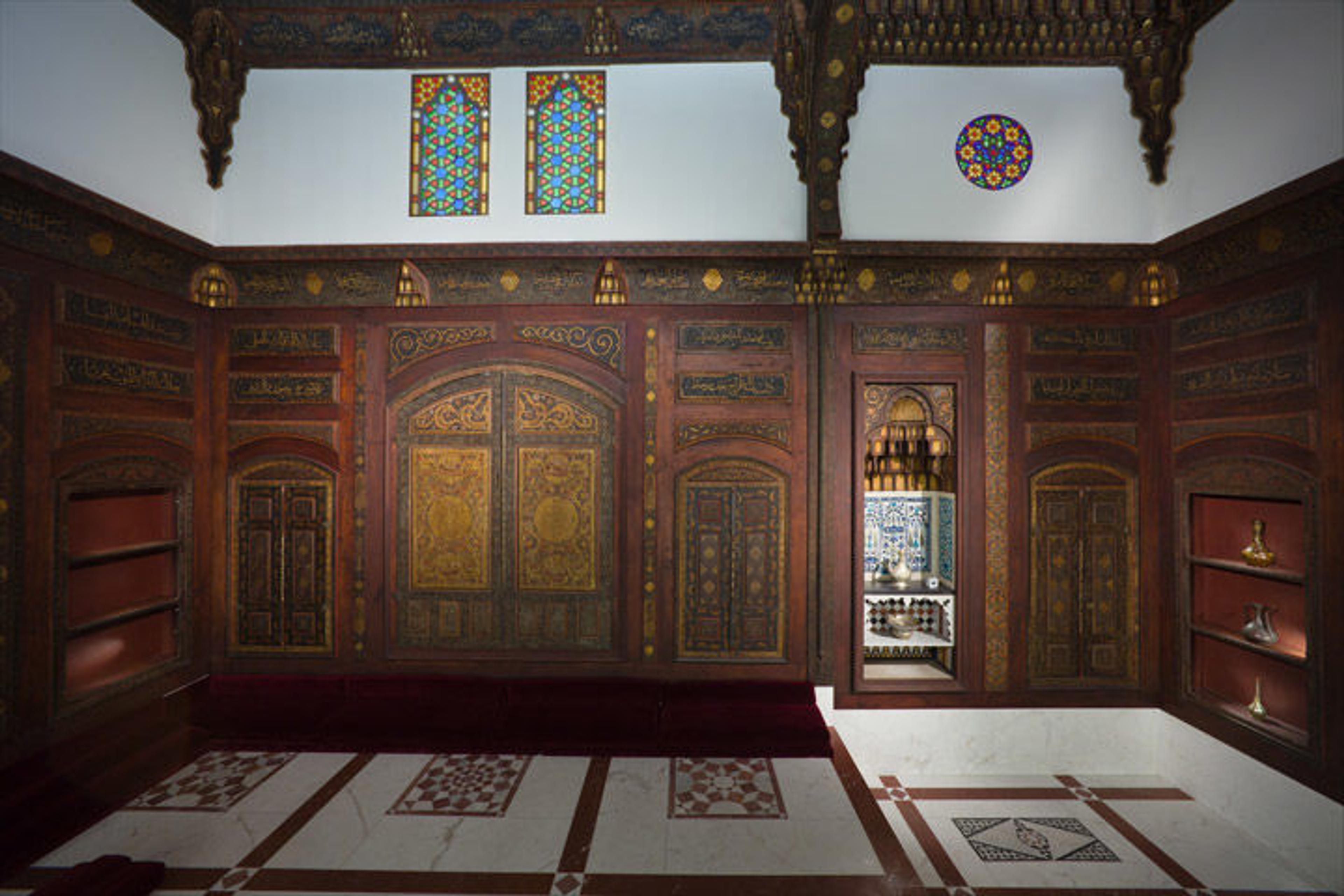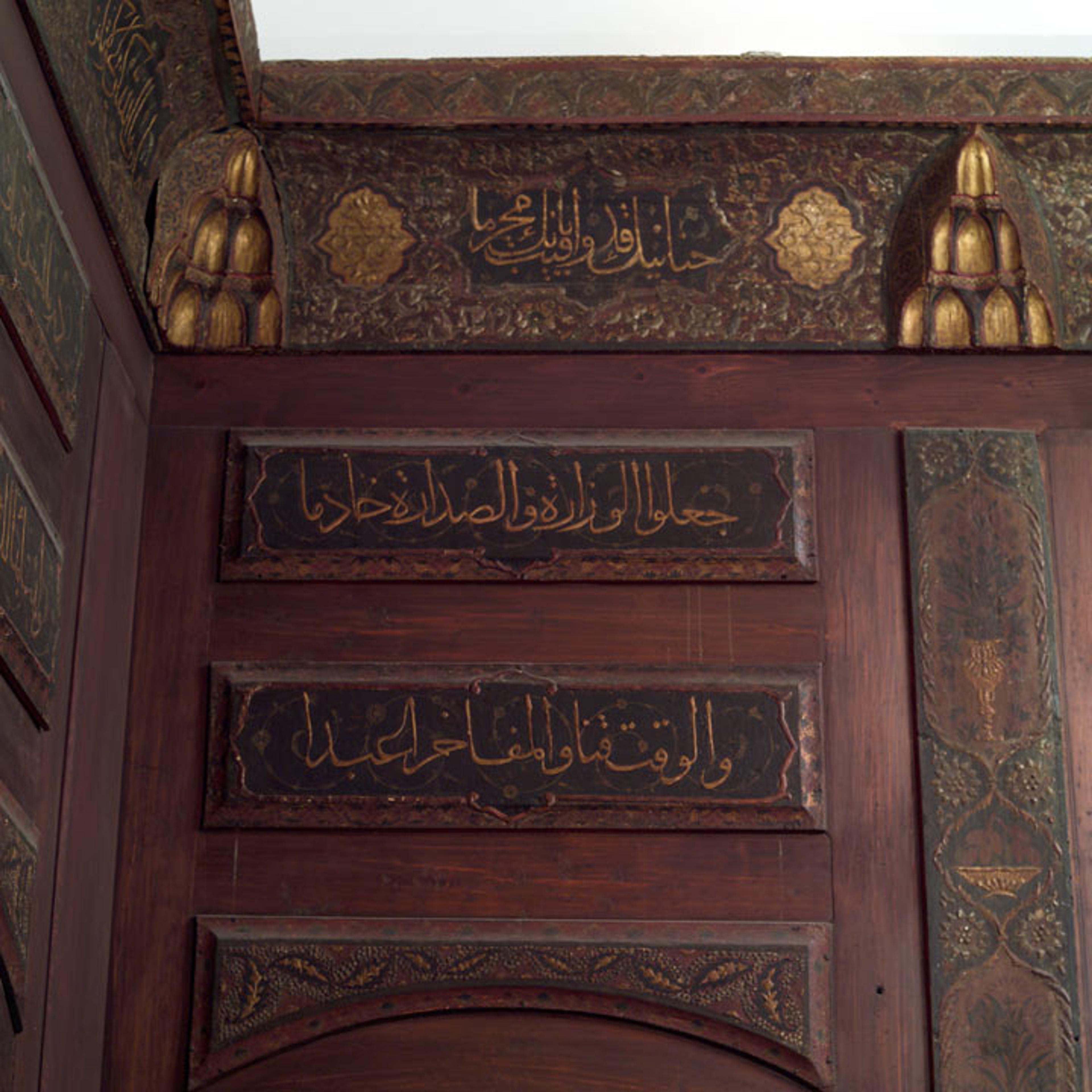
Damascus Room, dated A.H. 1119/A.D. 1707. Syria, Damascus. Islamic. Wood (poplar) with gesso relief, gold and tin leaf, glazes and paint; wood (cypress, poplar, and mulberry), mother-of-pearl, marble and other stones, stucco with glass, plaster ceramic tiles, iron, brass; H. 22 ft. 1/2 in. x 16 ft. 8 1/2 in. (671.6 x 509.2 cm), D. from inside front entrance to back wall 26 ft. 4 3/4 in. (804.2 cm). The Metropolitan Museum of Art, New York, Gift of The Hagop Kevorkian Fund, 1970 (1970.170)
«There are certain things I expect when visiting an art museum: photographs, sculptures, and lots of paintings. While famous works of art in traditional media are fairly standard inclusions at most museums across the world, finding an entire room is a bit of a novelty. Museums seldom showcase interiors, an art form in their own right, and finding one as old and complete as the The Met's qa'a (commonly referred to as the Damascus Room) is rare.»
The room, dated to 1707, is thought to be the winter reception room from the house of an affluent individual or family from within the walled portion of Damascus, and is now nestled over 5,000 miles away on permanent display in a spacious corner of the Department of Islamic Art's galleries. The threshold of the room, known in Arabic as an ataba, features a small fountain that provides the soothing sounds of trickling water, which complements the peaceful sense of calm and awe that the room evokes. The attention to detail in the room is second to none, as the poplar wood is covered in gesso relief, which uses gold and tin leaf, transparent colored glazes, and bright egg-tempera paints.

Detail view of the Damascus Room's fountain
Removed from a Damascene home in the 1930s, the room was purchased by Hagop Kevorkian, the renowned Armenian-American archaeologist and collector. Kevorkian then had the room shipped to New York in 1934, and it eventually made its way to The Met in the 1970s when the Hagop Kevorkian Fund donated it to the Museum.
As I pause to appreciate the breathtaking ceiling of the room, I ask myself why this particular space captivates me so. Perhaps it is because the room reminds me of India, the birthplace of my parents and where much of our extended family still resides. Visiting the Damascus Room during its original period of use must have been like visiting a person's home in India—removing your shoes upon entering, as people during this time would have surely done, and then sitting on a cushioned space on the floor surrounded by family, friends, and good conversation. The beauty of the space serves to amplify the experience.

View of the Damascus Room's northern wall
As a Muslim myself, visiting the room is unique experience; the space is distinctly secular, but connects to Islam through the calligraphic panels. Calligraphy, one of the most notable forms of Islamic art, is also featured in the room, as the wall cornices feature praises of the Islamic prophet Muhammed:
A prophet who has guided aright. Were it not for him, the dark would not be illuminated, night would not blossom, and slime would not bring forth greenery . . . And pray for the Chosen One and his companions whenever lightning sees the darkness frown and smiles.
The Islamic undertones in the room are not overbearing but do serve as a poignant reminder of the current state of Syria, the original home of this very room.

Detail view of calligraphy on the wall cornices
I, like many, spend most of my free time indoors and staring at screens. Instagram, Netflix, and viral YouTube videos suck away hours from each day, and maintaining my digital presence has become like a second job, even when I travel. Thankfully, museums like The Met present visitors with the rare opportunity to engage with art in person in a very visceral way. But even then, most museums have become opportunities for new Instagram posts. Like other visitors, I am guilty of simply waiting my turn to Instagram or tweet a photo of some well-known work of art before quickly rushing to the next recognizable piece.
When I first visited The Met, suggested hashtags lined the walls of exhibition galleries, and tourists could be spotted twisting their arms to get an optimal selfie. As I meandered from object to object, taking pictures of my own, I stumbled upon the qa'a. I found myself immersed in its splendor, truly experiencing the multifaceted offerings of the room—historical, artistic, and cultural. While it's hard to say whether Instagram will exist hundreds of years from now, even if it does, my descendants won't see a picture of the qa'a on my page. Some things truly deserve to only be experienced in person, and I'm proud to say that in that moment, my Instagram account was the last thing on my mind.
Resource
Ekhtiar, Maryam, Sheila Canby, Navina Haidar, and Priscilla P. Soucek, ed. Masterpieces from the Department of Islamic Art in The Metropolitan Museum of Art. New York: The Metropolitan Museum of Art, 2011.
Related Link
Now at The Met: Thomas P. Campbell, "Syrian Art at the Met" (September 25, 2013)